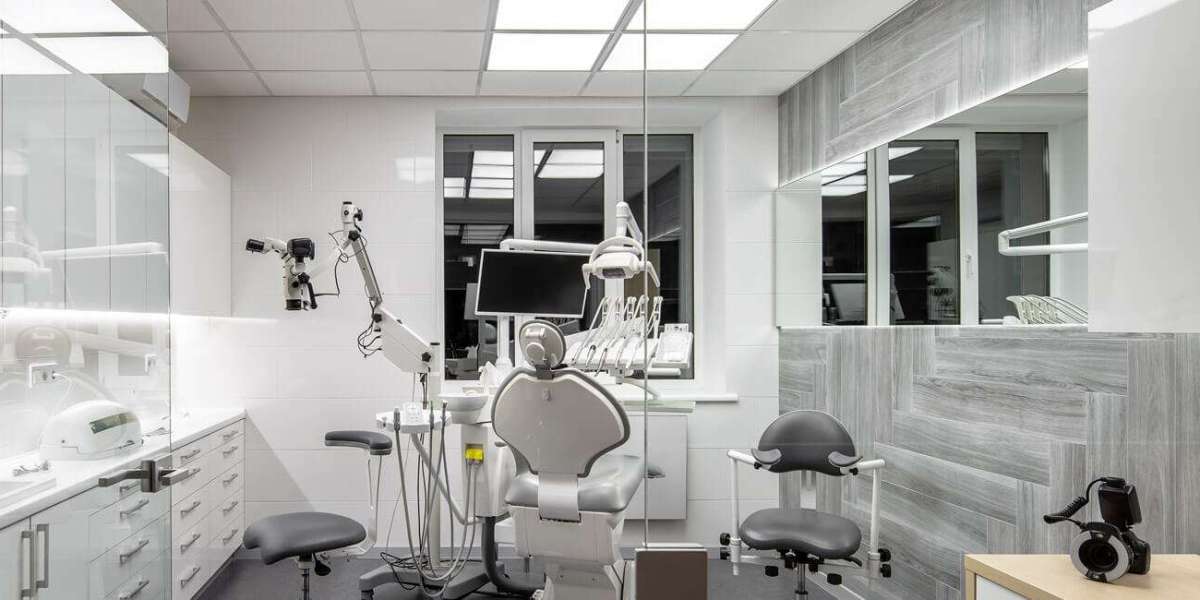Designing a functional, safe, and efficient dental decontamination room goes beyond equipment placement. A key strategy is the creation of segregated zones, ensuring a smooth workflow while maintaining strict infection control. These designated areas improve safety, boost efficiency, and help meet regulatory standards. In this blog, we’ll discuss how segregated zones enhance the decontamination room layout and share best practices for optimising these zones, especially in spaces with limited room.
Understanding the Importance of Dental Decontamination Rooms
A dental decontamination room is essential for maintaining high levels of hygiene and safety in a dental practice. Designed for cleaning, disinfecting, sterilising, and storing instruments, it helps prevent cross-contamination and ensures compliance with strict health regulations. A well-planned decontamination room enhances workflow efficiency and safeguards both patients and staff.
Segregated zones within the room enable a clear, contamination-free flow from dirty to clean to sterile areas, reducing risks and increasing productivity. Additionally, thoughtful dental reception design plays a crucial role in ensuring the clinical and reception areas function harmoniously, improving both operational efficiency and the overall patient experience.
The Concept of Segregated Zones
Segregated zones prevent cross-contamination, ensuring separate dirty, clean, and sterile stages for safety and efficiency.
- Dirty Zone: This is where used instruments arrive and are pre-cleaned before the sterilisation process. The area must be designed to contain any bio hazardous material safely.
- Clean Zone: Instruments are prepared for sterilisation in this area. It is crucial that no contamination occurs in this space.
- Sterile Zone: This is the final stage where sterilised instruments are stored or used. Keeping this area separate from the others ensures that sterile instruments remain uncontaminated.
Clear zone definition, both physically and operationally, ensures infection control and regulatory compliance.
Key Segregated Zones in Dental Decontamination Room Design
To fully understand how segregated zones enhance the layout of a decontamination room, it’s essential to break down the functions and features of each zone. Let's take a closer look:
Dirty Zone
The dirty zone is where used dental instruments are first brought after patient treatment. This zone is critical as it poses the greatest risk of contamination. Typically, this zone contains:
- Sinks and washing stations: For cleaning instruments before they are moved to the clean zone.
- Dirty holding bins: For storing instruments temporarily until they can be cleaned.
- Disinfection stations: For initial disinfecting before instruments are placed in the clean zone.
The dirty zone prevents contamination spread, effectively containing harmful pathogens and maintaining room cleanliness.
Clean Zone
This zone is also critical to maintaining hygiene and must be kept separate from the dirty and sterile zones to ensure instruments don’t get re-contaminated.
- Drying stations: To ensure instruments are thoroughly dry before they are sterilised.
- Preparation tables: For organising the instruments in preparation for sterilisation.
- Packaging areas: Where instruments are wrapped or bagged before being sterilised.
Sterile Zone
The sterile zone stores cleaned instruments, ensuring they remain free from contamination before patient use, maintaining strict sterilisation to protect patient safety.
- Sterilised storage: Cabinets or drawers that are designed to store instruments in a way that protects them from contamination.
- Sterile packaging and sealing: Instruments are often sealed in sterile packaging to prevent re-contamination.
The sterile zone needs to be clearly marked and should be physically separated from both the dirty and clean zones.
Supporting Zones
In addition to the primary zones, there are several supporting zones in the decontamination room design that help maintain cleanliness and efficiency. These include:
- Waste disposal area: For disposing of contaminated items safely.
- PPE storage: For storing protective equipment, such as gloves, masks, and gowns.
- Disinfectant storage: For housing cleaning and sterilisation chemicals.
These zones ensure staff have the necessary tools and resources to work safely and efficiently.
Benefits of Segregated Zones in Decontamination Room Design
The benefits of implementing segregated zones in dental decontamination room design are numerous. Below are some of the key advantages:
1. Enhanced Infection Control
Segregating the different stages of the decontamination process reduces the risk of cross-contamination. Dirty instruments are kept separate from cleaned and sterilised items, ensuring that the latter remain uncontaminated.
2. Improved Workflow Efficiency
A well-organised decontamination room with segregated zones allows for a smooth and efficient workflow. Staff can easily move instruments through each stage of the process without confusion or delay, improving overall efficiency.
3. Compliance with Health and Safety Regulations
Segregated zones help dental practices meet health and safety standards set by regulatory bodies. Proper zoning of tasks ensures that practices are adhering to the necessary infection control protocols.
4. Increased Staff Safety
By clearly defining areas for different tasks, segregated zones help protect dental staff from accidental exposure to harmful pathogens. PPE and hygiene protocols are easier to enforce when the workspace is clearly organised.
5. Reduced Risk of Errors
Clear separation of tasks helps reduce errors in the sterilisation process, ensuring that instruments are properly cleaned, disinfected, and stored in the correct sequence.
Best Practices for Designing Segregated Zones
Designing segregated zones in limited spaces requires careful planning to ensure functionality, infection control, and compliance with standards.
- Use of physical barriers: Physical barriers, such as walls or glass partitions, can effectively separate the dirty, clean, and sterile zones.
- Clear signage: Labelling zones with clear signage ensures that staff follow the correct procedures.
- Ergonomic layout: Ensure that the layout of the room allows for easy movement between zones without compromising safety or efficiency.
- Proper ventilation: Good airflow is essential, particularly in the clean and sterile zones, to maintain a contaminant-free environment.
- Efficient use of space: Maximise the use of available space by incorporating smart storage solutions and flexible designs that can adapt to future needs.
Conclusion
Segregated zones are vital in the design of an effective and efficient dental decontamination room. By separating the dirty, clean, and sterile stages of the decontamination process, dental practices can enhance infection control, improve workflow, and ensure compliance with health and safety regulations.
Working with a skilled team, such as Divo Interiors LTD, can help optimise the layout of your decontamination room, ensuring that each zone serves its purpose effectively. With thoughtful planning, your decontamination room will not only meet regulatory standards but will also create a safe and efficient environment for both staff and patients.


